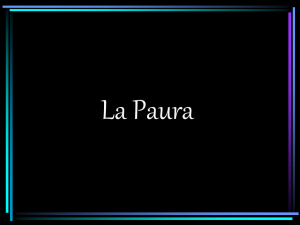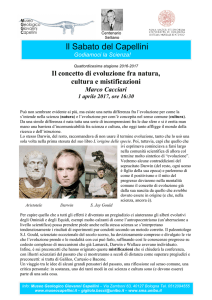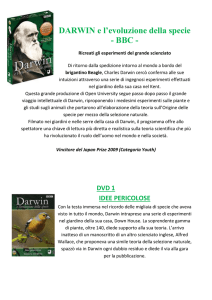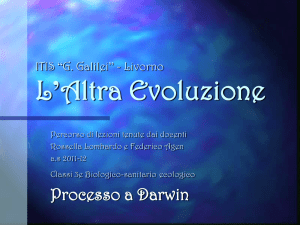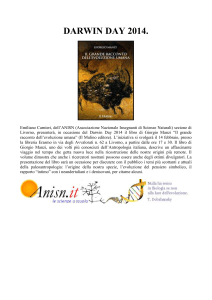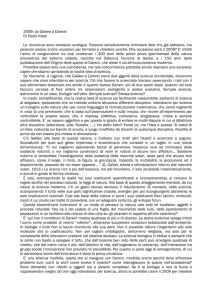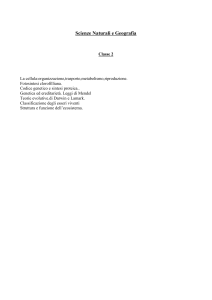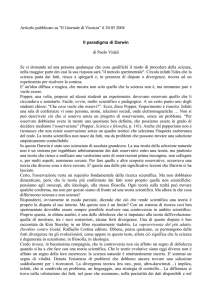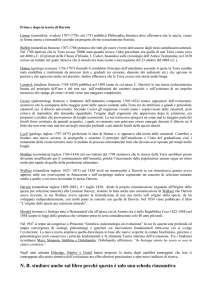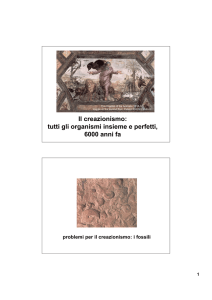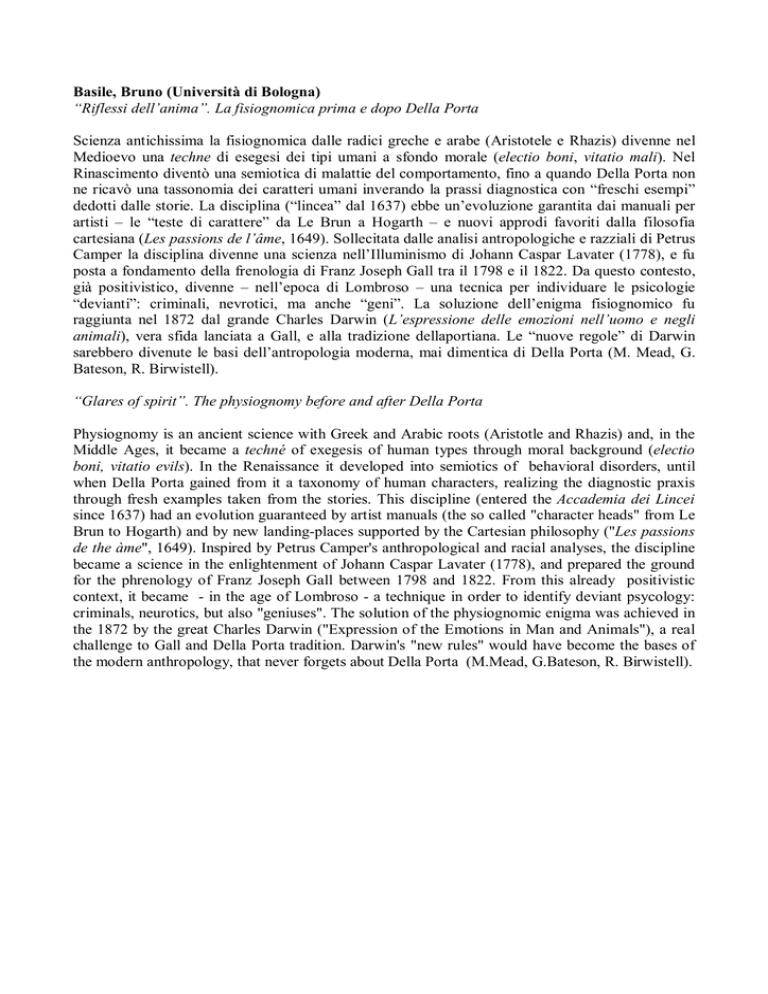
Basile, Bruno (Università di Bologna)
“Riflessi dell’anima”. La fisiognomica prima e dopo Della Porta
Scienza antichissima la fisiognomica dalle radici greche e arabe (Aristotele e Rhazis) divenne nel
Medioevo una techne di esegesi dei tipi umani a sfondo morale (electio boni, vitatio mali). Nel
Rinascimento diventò una semiotica di malattie del comportamento, fino a quando Della Porta non
ne ricavò una tassonomia dei caratteri umani inverando la prassi diagnostica con “freschi esempi”
dedotti dalle storie. La disciplina (“lincea” dal 1637) ebbe un’evoluzione garantita dai manuali per
artisti – le “teste di carattere” da Le Brun a Hogarth – e nuovi approdi favoriti dalla filosofia
cartesiana (Les passions de l’âme, 1649). Sollecitata dalle analisi antropologiche e razziali di Petrus
Camper la disciplina divenne una scienza nell’Illuminismo di Johann Caspar Lavater (1778), e fu
posta a fondamento della frenologia di Franz Joseph Gall tra il 1798 e il 1822. Da questo contesto,
già positivistico, divenne – nell’epoca di Lombroso – una tecnica per individuare le psicologie
“devianti”: criminali, nevrotici, ma anche “geni”. La soluzione dell’enigma fisiognomico fu
raggiunta nel 1872 dal grande Charles Darwin (L’espressione delle emozioni nell’uomo e negli
animali), vera sfida lanciata a Gall, e alla tradizione dellaportiana. Le “nuove regole” di Darwin
sarebbero divenute le basi dell’antropologia moderna, mai dimentica di Della Porta (M. Mead, G.
Bateson, R. Birwistell).
“Glares of spirit”. The physiognomy before and after Della Porta
Physiognomy is an ancient science with Greek and Arabic roots (Aristotle and Rhazis) and, in the
Middle Ages, it became a techné of exegesis of human types through moral background (electio
boni, vitatio evils). In the Renaissance it developed into semiotics of behavioral disorders, until
when Della Porta gained from it a taxonomy of human characters, realizing the diagnostic praxis
through fresh examples taken from the stories. This discipline (entered the Accademia dei Lincei
since 1637) had an evolution guaranteed by artist manuals (the so called "character heads" from Le
Brun to Hogarth) and by new landing-places supported by the Cartesian philosophy ("Les passions
de the àme", 1649). Inspired by Petrus Camper's anthropological and racial analyses, the discipline
became a science in the enlightenment of Johann Caspar Lavater (1778), and prepared the ground
for the phrenology of Franz Joseph Gall between 1798 and 1822. From this already positivistic
context, it became - in the age of Lombroso - a technique in order to identify deviant psycology:
criminals, neurotics, but also "geniuses". The solution of the physiognomic enigma was achieved in
the 1872 by the great Charles Darwin ("Expression of the Emotions in Man and Animals"), a real
challenge to Gall and Della Porta tradition. Darwin's "new rules" would have become the bases of
the modern anthropology, that never forgets about Della Porta (M.Mead, G.Bateson, R. Birwistell).

